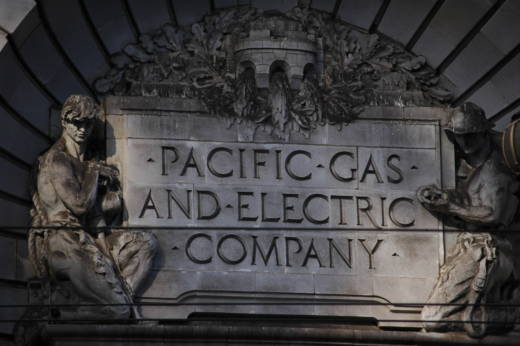PG&E's analysis said the moisture buildup and outage occurred because a bypass valve at McDonald Island was improperly left open. That mistake allowed moisture-laden natural gas to flow from the storage facility into PG&E's pipeline network without passing through equipment designed to remove water vapor.
"PG&E failed to check the position of (the) valve, and hence failed to comply with its operational procedure," the CPUC report states.
Federal safety regulations require pipeline operators to prepare and follow their own operations, maintenance and emergency procedures.
The company's guidelines for its Whisky Slough station at McDonald Island require that the valve at the center of the outage be checked to make sure that it's closed.
"PG&E failed to do so and hence is in non-compliance for not following its own operational procedure," the CPUC report says.
The agency's staff report shows that PG&E lacked a system that would ensure its internal safety guidelines were followed, according to Steve Weissman, a former CPUC administrative law judge and lecturer at UC Berkeley's Goldman School of Public Policy.
"Since we're dealing with safety issues here with natural gas flows, the need to have those checks and balances could hardly be more important," Weissman said after reviewing the CPUC report.
"What we're dealing with here is ongoing human judgement and the potential for human error," Weissman said. "Even though PG&E succeeded in catching its mistake this time before anybody got hurt, that doesn't eliminate the importance of having the safeguard in place from the outset."
Local consumer advocates who reviewed the CPUC staff's report say it shows that PG&E committed "sloppy mistakes" in the Discovery Bay gas outage and it has not learned lessons from the deadly San Bruno gas pipeline explosion in September 2010.
"PG&E's ads tell us they're putting safety first, but this report tells us different," said Mindy Spatt, a spokeswoman for The Utility Reform Network (TURN).
"The last things customers want to hear are that PG&E's asset and risk-management practices are still inadequate," Spatt said in an email.
PG&E has until Monday to respond to the commission's report. The company is reviewing the CPUC's notice of probable violation, said PG&E spokesman Greg Snapper.
The agency plans to determine whether to issue any fines or penalties after that, a decision that would lead to talks with the company and a recommendation by an administrative law judge.
The fact that PG&E discovered problems associated with the outage on its own and that the incident caused no harm could reduce the chances of a serious fine against the company, according to Weissman, the former CPUC administrative law judge.
"These are factors that are not likely to let PG&E off the hook, but may very well become factors that reduce the overall penalty," Weissman said.
Company officials say they quickly made repairs, tried to compensate the affected customers and have taken steps to ensure a similar failure doesn't happen again anywhere in its natural gas pipeline system.
"We've been supporting the community ever since we proactively shut off gas to maintain safety for our customers," PG&E spokesman Snapper in an email.
PG&E gave $30 to each of the customers affected by the outage, donated thousands of dollars to local schools that served as warming centers and helped finance the building of a new local playground in Discovery Bay, Snapper said.
The company's report released last year calls for significant reforms, pushing for changes in how PG&E operates its natural gas facilities.
Of the 31 recommendations called for in the analysis, PG&E has completed or is in the process of completing 27 of them, Snapper said.
